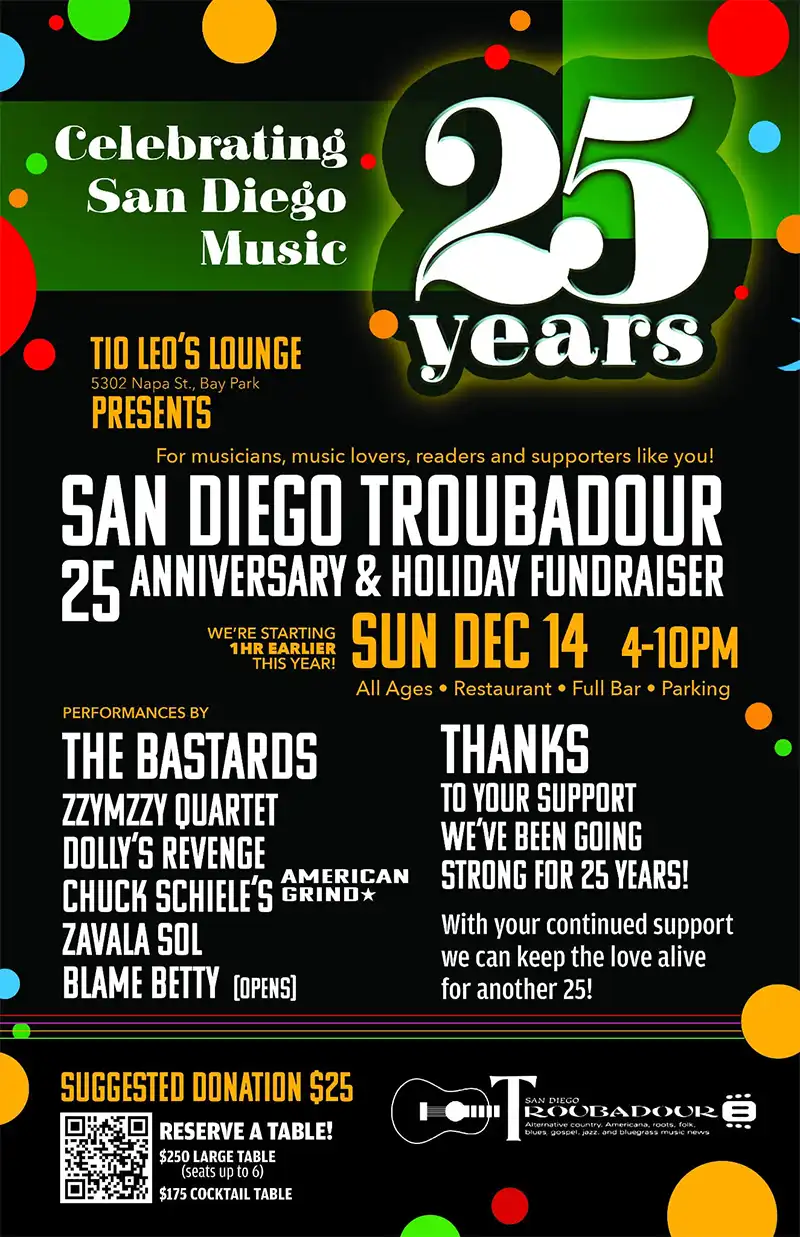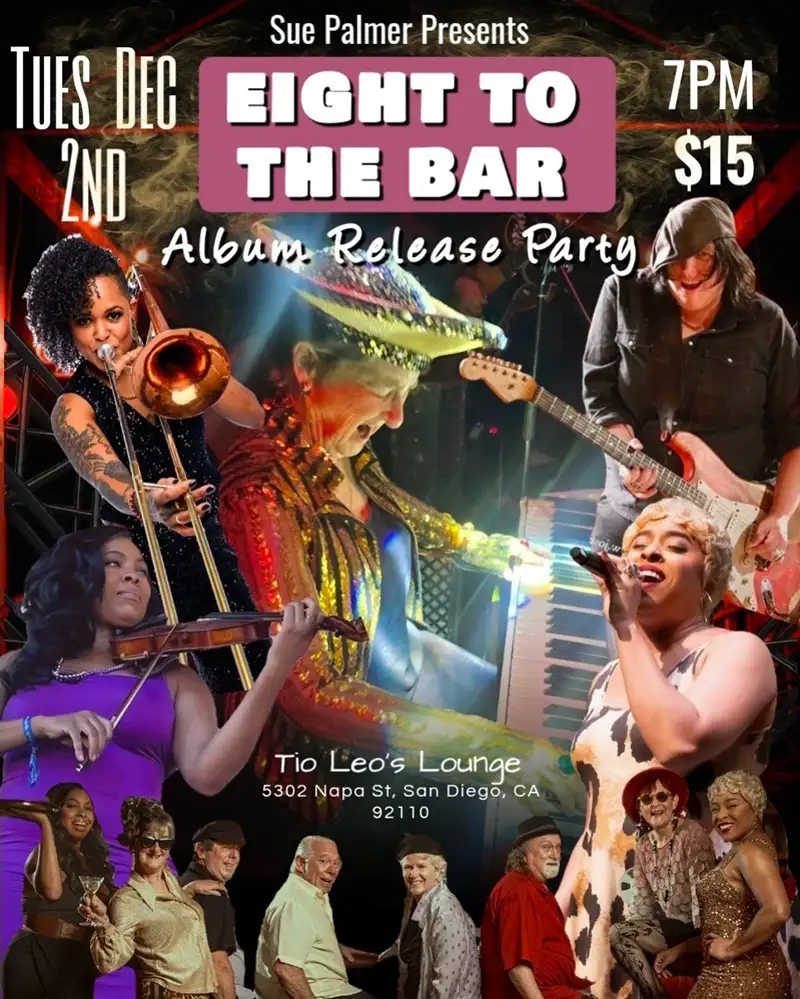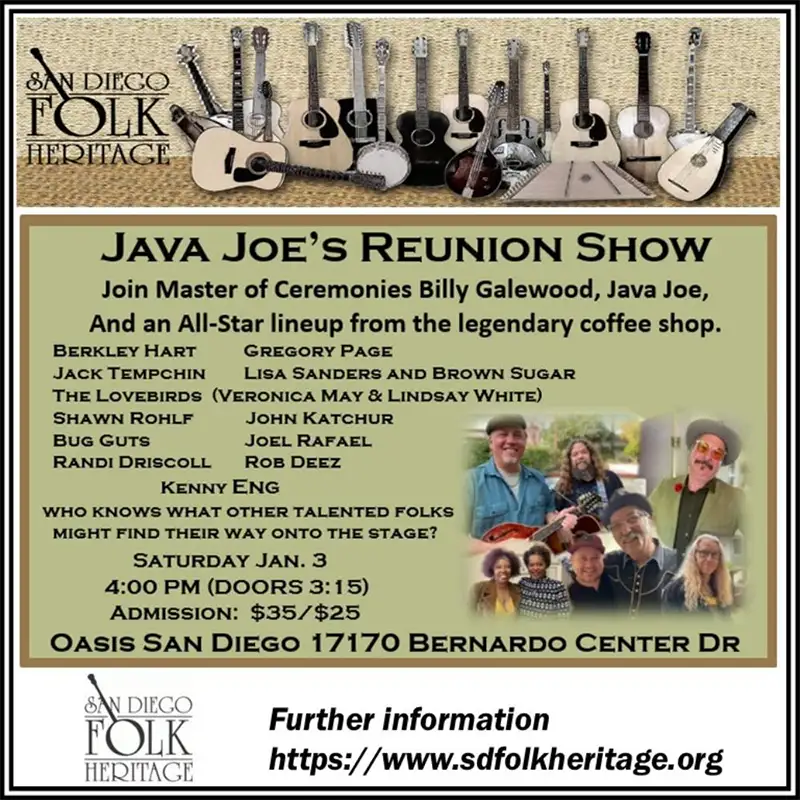Featured Stories
Counterculture Coincidence: 1954 = Morrison, Hopper, and Zappa
San Diego has been home to many renowned performers over the decades, but even for casual fans of music history, 1954 would be considered a special year. The mid-fifties were bringing changes to this country that would culminate in the late sixties counterculture; three icons of that period happened to spend 1954 in San Diego going to school. Though they were all passing through town on the way to greater things, it’s clear that the seeds of their successes were planted here.
Jim Morrison
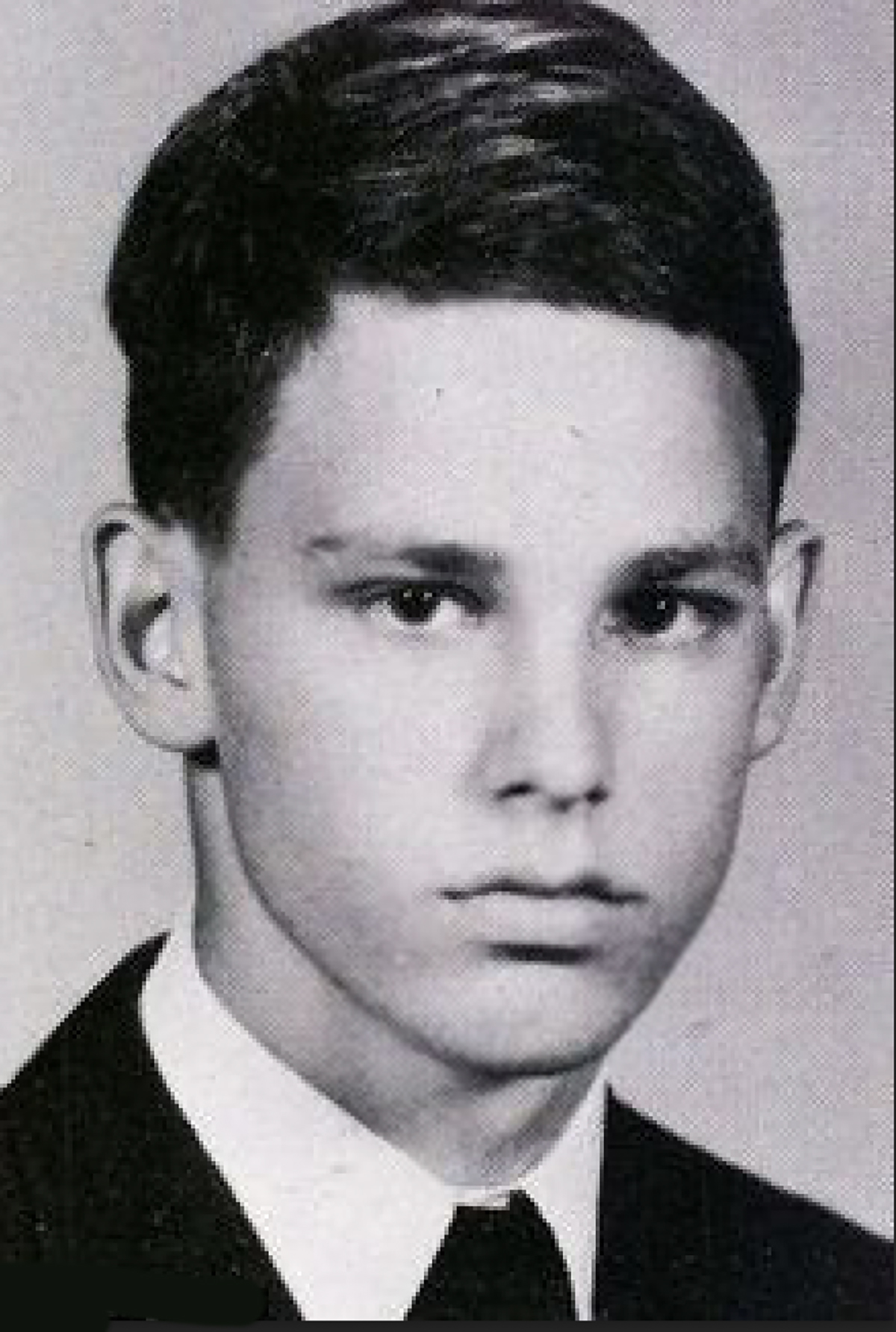
Young Jim Morrison.
The biggest surprise to many is that while the Doors may be known as a Los Angeles group, Jim Morrison (December 8, 1943-July 3, 1971) is actually from Clairemont. Well, sort of. Coming from a Navy family, the son of Rear Admiral Steven Morrison no less, Jim traveled a lot as a youth, but his family settled here on and off. Visitors to the Rock ‘n’ Roll Hall of Fame can see a slew of Morrison’s childhood mementos from his stay at Longfellow Elementary School in good old Clairemont. Ranging from his cub scout uniform to his report card, the display really contrasts with Morrison’s image as the Lizard King. The famed tale about a young Jim Morrison being thrown out of the Cub Scouts for either talking back to a den mother or riding a bike without using his hands, depending on your source, which took place right here, was clearly an early stab at rebellion. According to one biography Angels Dance, Angels Die by Patricia Butler, Morrison was class president and gave a few speeches to the student body, but his stay would be short. The family arrived late in 1952, taking up residence at 2634 Arnott Street, with Jim in class from 1953-1954 and graduating from sixth grade on June 16, 1955. More important, Morrison first dipped his toes into the poetry well while here. One of his earliest poems on display at the Rock ‘n’ Roll Hall of Fame is dated May 21, 1954 and already shows his love of western imagery. It’s titled “The Pony Express.” Jim would return to the San Diego area during the early 1960s to inform his parents, again stationed here, of his decision to attend UCLA, which was not received positively. The rest, as they say, is history. The Morrison family remained in San Diego, so it was only natural that the Doors played a few shows here: July 8, 1967 at Balboa Stadium on a bill that included North County’s Lyrics; November 4, 1967 and June 29, 1968 at Golden Hall; and August 22, 1970 at the Sports Arena. The Morrison-less Doors also played a gig at Balboa Stadium on August 13, 1972. Music historian Jon Moore notes that the band’s concert there on October 26, 1969 was canceled. Doors members Ray Manzarek and Robbie Krieger returned to town often with their solo projects and have recently reunited for concerts, capping a brilliant career, but it can’t be the same without Morrison. As rock icons come, they don’t get any bigger, and it’s fascinating to think that in some small way, life in our perennially sunny burg, influenced the Lizard King.
Dennis Hopper
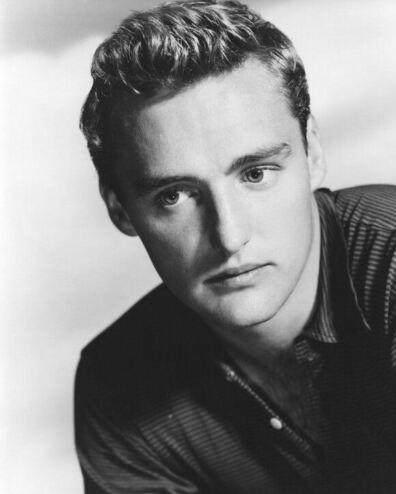
Dennis Hopper
1954 also featured a graduation for Dennis Hopper. Synonymous with the 1960s (and one of the first major film directors to use rock music as more than an exploitation soundtrack), his role in Easy Rider forever cemented Hopper’s image as a rebellious sort. A multifaceted pop culture icon, the actor-director was born in Dodge City, Kansas on May, 17 1936, moving to San Diego in 1949 at the age of 13. Already dreaming of being an actor during his time here he transformed a love for theater into a major movie career. The family resided at 3224 Massachusetts St., just south of Broadway in Lemon Grove. While his father worked at the local post office, legend has it the younger Hopper worked at an early Jack in the Box location in the area. He certainly attended Lemon Grove Junior High School and, for a brief time, Grossmont High School until the opening of Helix High in 1952. There he excelled in drama and debate but was kicked out of his speech and social studies classes. Truth be told, his love of theater meant that he was often somewhere other than his school seat. He began performing as soon as he arrived in town at both the La Jolla Playhouse as well as the Old Globe Theatre, where he took lessons on a national Shakespeare scholarship. At first, acting was almost an afterthought for him at the La Jolla Playhouse, as he was kept busy running errands in the company’s truck, cleaning up the premises, and doing other odd jobs. But in eighth grade he appeared in a production of Hamlet and, almost as important, later met Vincent Price there. Price was not just an actor but also a collector of contemporary art, and this meeting with an adjacent introduction to art would help spark a lifelong passion. Voted most likely to succeed, he graduated from Helix High School in 1954 while appearing in productions of Twelfth Night and The Merchant of Venice at the Old Globe and Hamlet at the La Jolla Playhouse. The years of hard work and obsession with his craft paid off almost immediately. Within the year Hopper had appeared in the first two of more than 140 television shows and was also on his way to becoming one of the screen’s best known and intense actors. Later that same year he simultaneously began his film career, shooting two movies in quick succession, one of which included Rebel Without a Cause. Numerous other credits in the ensuing decades include directing and co-writing 1969’s Easy Rider, Apocalypse Now, Giant, True Grit, and about 200 other film credits. Hopper has returned to town often for plays and civic events, including a performance in the play The Skin of Our Teeth and a curtain raising luncheon for the La Jolla Playhouse. Hopper died in 2010 in Los Angeles.
Frank Zappa
Closing out the triumvirate, we come to Frank Zappa (December 21, 1940-December 4, 1993), noted composer, actor, producer, and guitarist. Due to the fact that the Zappas moved around quite a bit, it’s hard to nail down exact dates the Zappa family actually resided in El Cajon, but we do know that they arrived in 1954. Frank was 14 and enrolled at Grossmont High School. As a teenager he was enamored of R&B and collected 78 rpm records (his favorite record was “Angel in My Life” by the Jewels) but was also interested in more diverse sounds. It was his discovery of The Complete Works of Edgar Varese, Volume 1 (French composer known as the father of electronic music), which he bought at a La Mesa stereo shop that really opened up his eyes to the possibilities of music. It was also while in San Diego that Zappa first made an unsuccessful attempt to reach Varese, trading a $5 Christmas gift from his sister for the chance to make a long-distance phone call. In the end he only reached Varese’s wife, but it was a quest Zappa would continue.
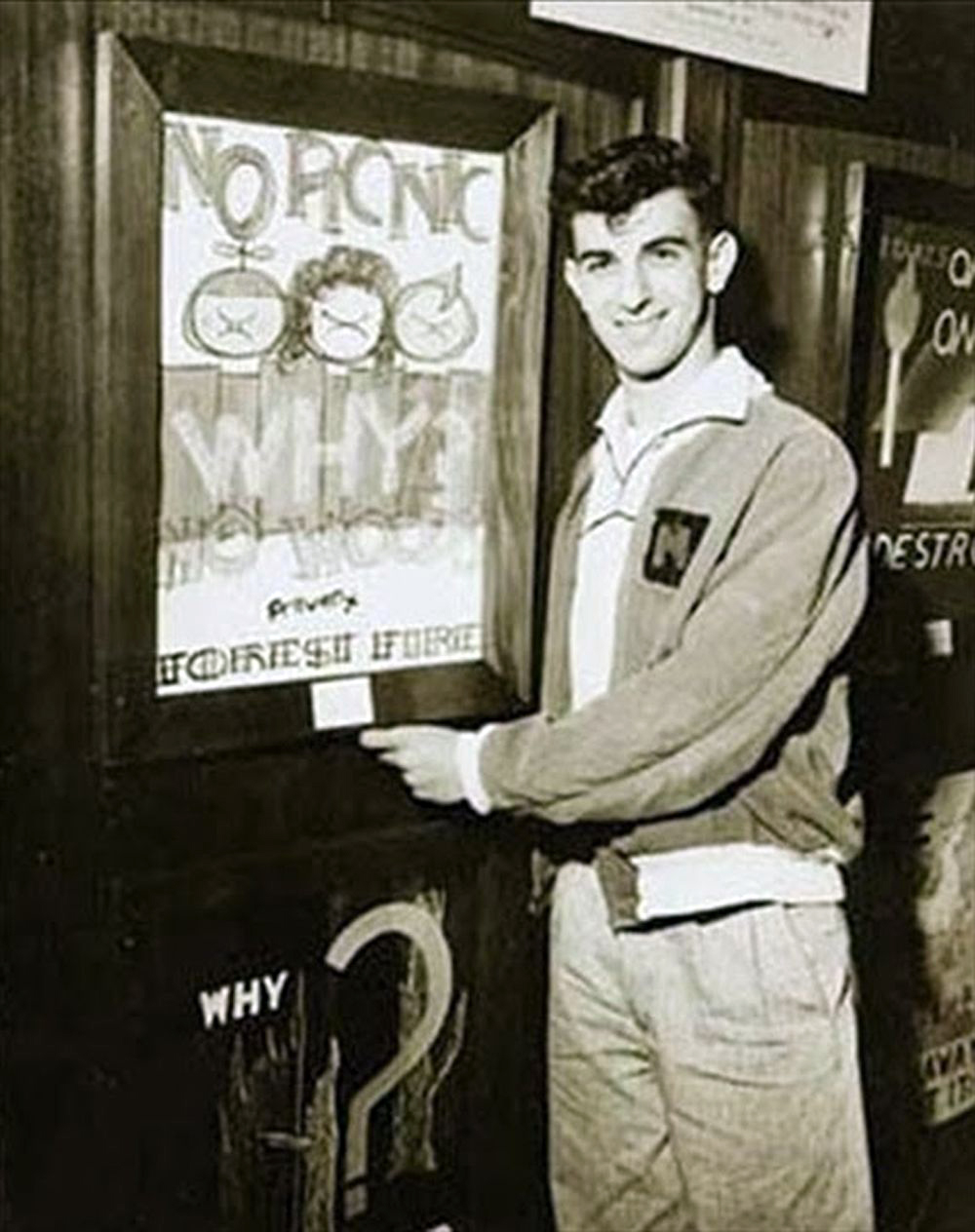
Frank Zappa wins the poster concert at Clairemont High School.
Zappa first made the newspapers in April of 1955 when, as a ninth grader, he won the county’s Fire Prevention Week poster contest. Much more important, he joined his first band, The Ramblers, later that year. Legendary for his guitar playing today, he was a drummer to begin with though not a particularly good one. Like something out of the Our Gang comedies, Zappa used pots and pans for drums at initial rehearsals, since he didn’t actually acquire a drum kit until the week before the gig. He played his first show at the Uptown Hall at 40th St. and Meade Ave., after which the band split the seven-dollar take among them. Having been chastised for being too splashy with his cymbals, being a little shaky with the rhythm, and managing to forget to bring drumsticks to his first gig, it wasn’t long before the Ramblers replaced him. Indeed, by the time he turned 18 he had switched to his signature guitar. Zappa would continue to work with members of the Ramblers in later years.
During that fall, he transferred to Mission Bay High School as a tenth grader. Zappa took to the school’s music department immediately and has cited his band teacher Mr. Kavelman as having been particularly influential, introducing him to 12-tone music. Unfortunately, his love of mischief made his stay brief. Contrary to popular belief Zappa never graduated from that or any other San Diego school; he was expelled. It seems that he had a love of explosives and had already almost caused serious damage to himself once before moving to San Diego. His exodus from the local education system rosters came when he and a friend decided to set off a mixture of rocket fuel and stink powder at Mission Bay High’s annual open house for parents. He was caught and turned over to the authorities. Only family intervention and the news that the Zappas were once again relocating, this time to Lancaster, kept the young Zappa from serious punishment. He spent the last few months of his senior year at Antelope Valley High School in Lancaster, where he graduated on June 13, 1958. The next time he returned to San Diego in 1966 was to perform with the Mothers of Invention. He also also played a dozen gigs up through 1984. Zappa didn’t spend a lot of time in San Diego but in looking back at his long-storied career one can easily see that every second counted.
Despite the fact that San Diego’s place in the history of the arts is often overlooked, it’s clear that local performers have been making an impact since it first became possible to do so. Though some made their greatest impact after moving on, it’s important to note that without their time spent in San Diego, none of these performers, and therefore pop culture, would have been the same.
Reprinted from the San Diego Troubadour, November, 2005.


